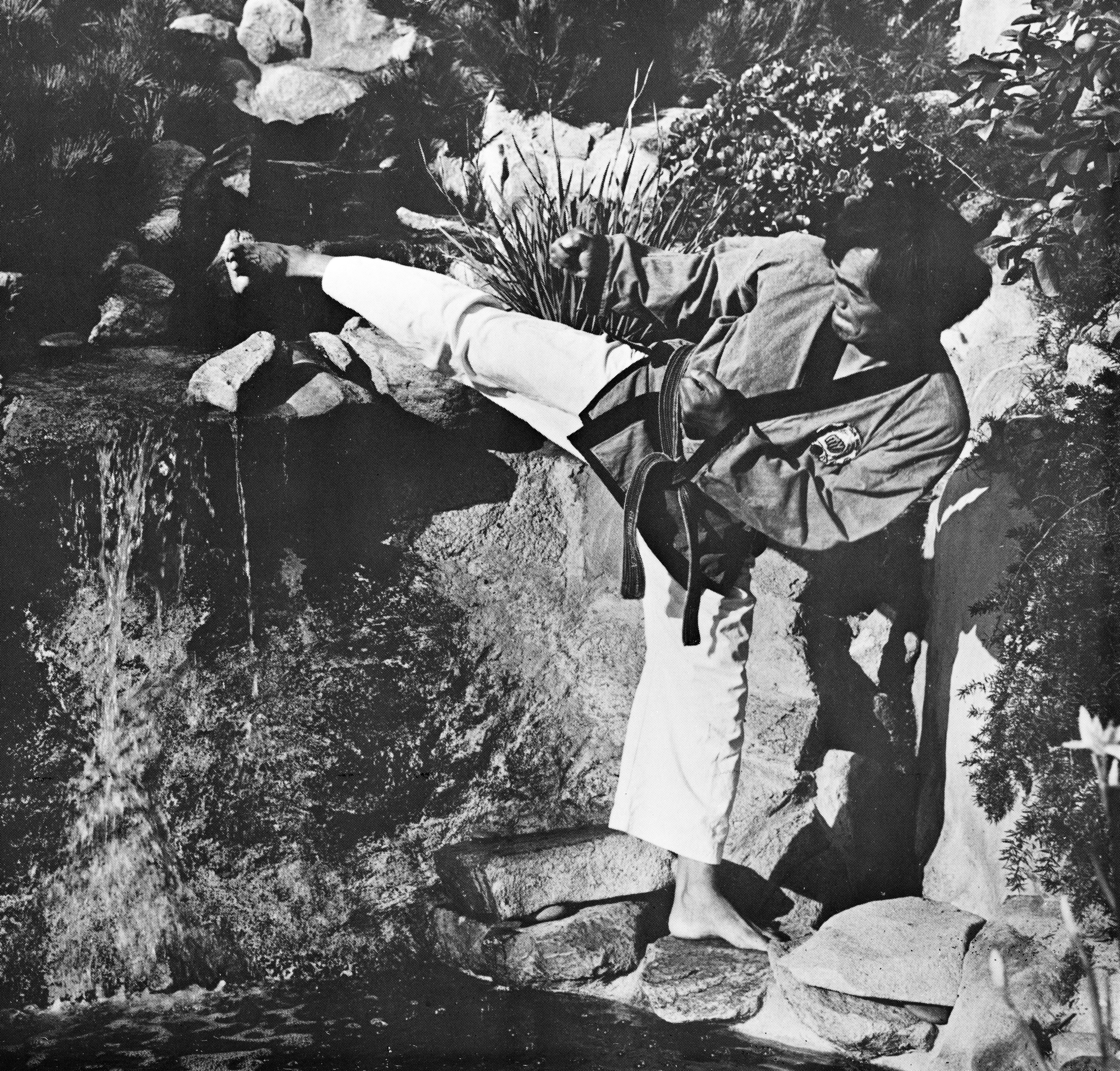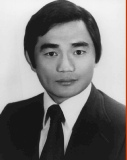The Birth of Tangsoology
 In
1974, Master Lee moved his dojang into
a suite in a newly constructed
strip mall on Convoy Street in Kearny Mesa because it
had outgrown the facility at 35th & El Cajon Boulevard.
The dojang on El Cajon Boulevard was housed in an old
wooden building from the Depression Era. It was
dimly lit, cramped, dingy, and smelled of sweat.
The new building was a large, clean, brightly lit
facility that seemed to mirror Master Lee's increasing
embrace of a more modern approach to martial arts
training.
Promotion in rank now included requirements for
intellectual development; not just improved karate
skills. Students were expected to submit
academic papers, introspective essays, recite poetry,
perform skits, and exhibit other cultural and aesthetic
arts.
In
1974, Master Lee moved his dojang into
a suite in a newly constructed
strip mall on Convoy Street in Kearny Mesa because it
had outgrown the facility at 35th & El Cajon Boulevard.
The dojang on El Cajon Boulevard was housed in an old
wooden building from the Depression Era. It was
dimly lit, cramped, dingy, and smelled of sweat.
The new building was a large, clean, brightly lit
facility that seemed to mirror Master Lee's increasing
embrace of a more modern approach to martial arts
training.
Promotion in rank now included requirements for
intellectual development; not just improved karate
skills. Students were expected to submit
academic papers, introspective essays, recite poetry,
perform skits, and exhibit other cultural and aesthetic
arts.
In 1975, Master Lee flew to Seoul, where he tested for and was promoted to childan (7th degree). He also visited his first instructor, Hong Jong Soo, who had been elected vice president of the Kukki Won (Taekwondo governing body) the previous year. He never revealed his reasons, but shortly after his return, there was a significant change at his dojang. He began calling his art Tangsoology—the science of Tang hands—and adopted the blue jacket seen in the photo at left for his yudanja (black belts). In addition to retaining the traditional hyung (practice patterns) of Tang Soo Do borrowed from Shōtōkan, he implemented several new hyung of his own creation that strongly emphasised a variety of kicking techniques. He had broken away from the Moo Duk Kwan and its founder, Hwang Kee, and was now independent.
Many factors may have influenced his decision to sever his relationship with the Moo Duk Kwan. Tang Soo Do itself was undergoing internal changes. Hwang Kee's son, Hwang Jin Mun, who renamed himself Hwang Hyun Chul after nearly being killed in an automobile accident and was junior in age and rank to Master Lee, moved to the USA in 1975 and was appointed to oversee all Moo Duk Kwan instrutors there. Other instructors once junior to Master Lee had been promoted over him, apparently in reward for political favours. In Korea, politics had resulted in Tang Soo Do being recast as Soo Bahk Do and its origins as a Japanese karate style mythologised. Lee's own instructor had broken from Tang Soo Do a decade earlier, and was now playing a major role in the suppression of Tang Soo Do in Korea. And several of Lee's contemporaries had broken away and formed their own Tang Soo Do organisations. It may have been a combination of these factors, or it may simply have been that his instructional philosophy and direction had diverged sufficiently from the founder's that it was no longer beneficial to either to continue their affiliation.
In some respects, Master Lee's independence and the establishment of Tangsoology reflected his own evolution as a naturalised American citizen. He had long advertised his school as a "dong-hak" ("Eastern teachings") dojang, but as his citizenship and his education in American academic institutions progressed, he increasingly adopted more Western ways of thinking and teaching. Just as he had personally blended American culture with his Korean upbringing and culture, so too Tangsoology was a blend of Eastern and Western culture, as well as the traditional and the modern.



